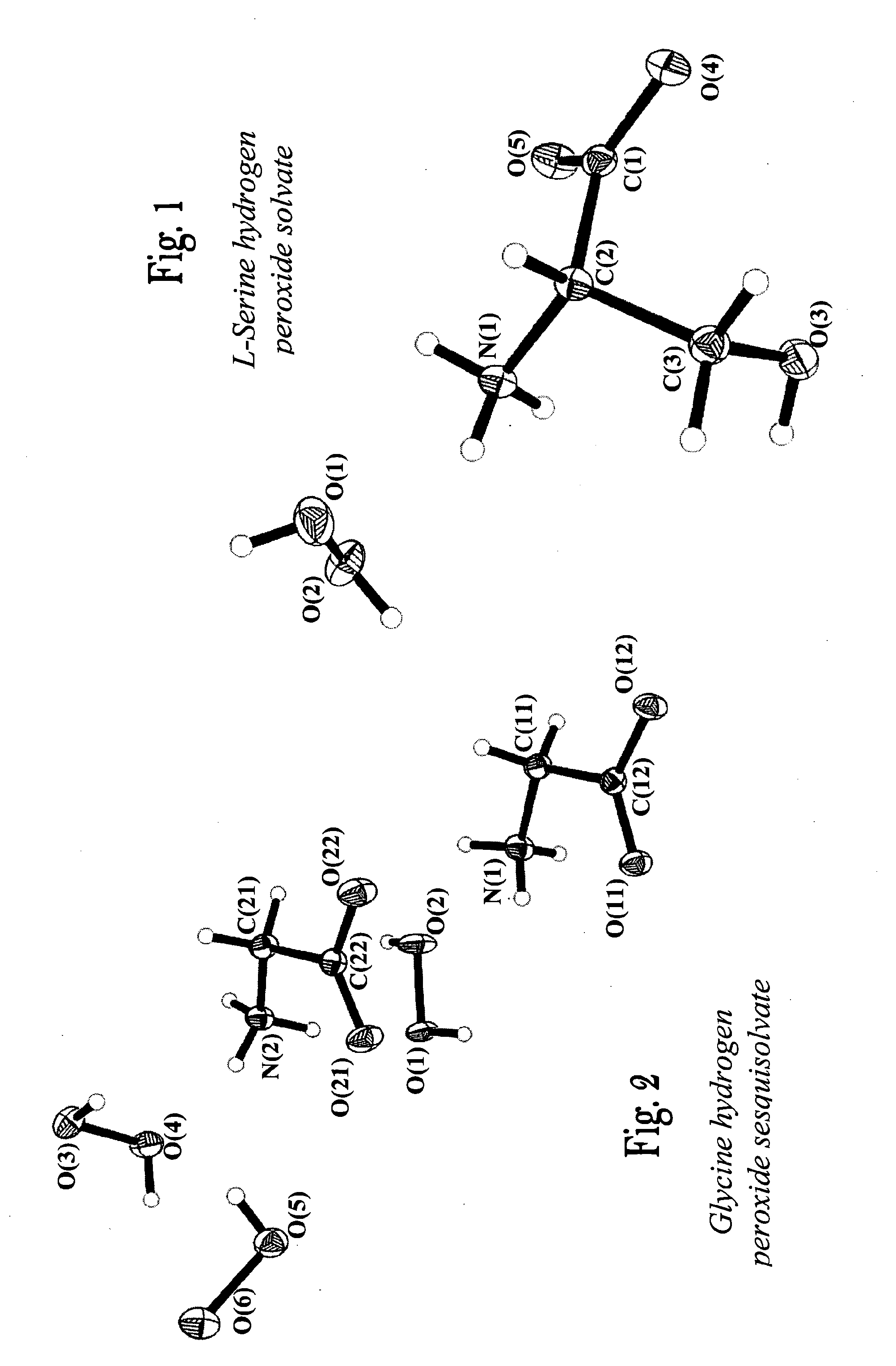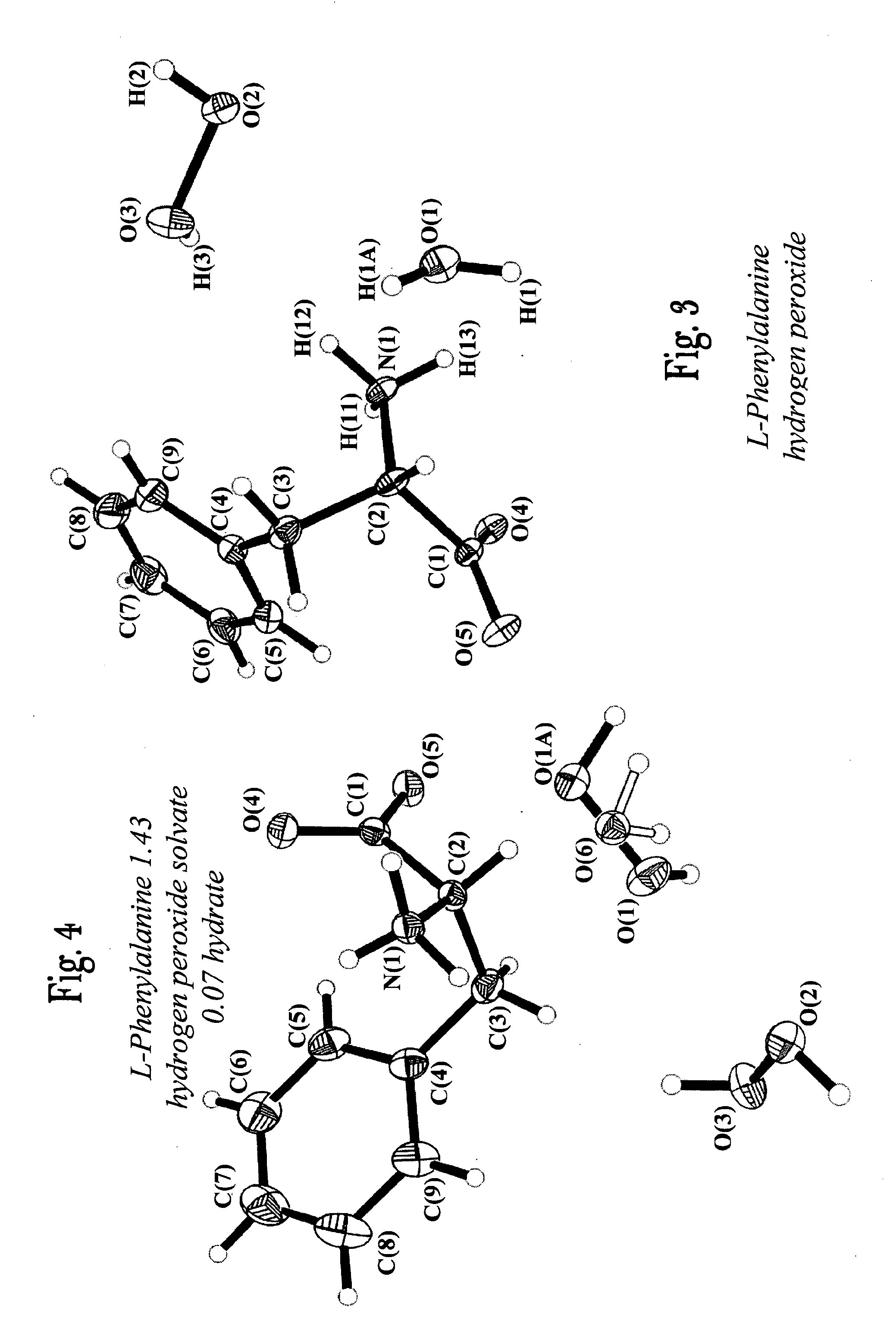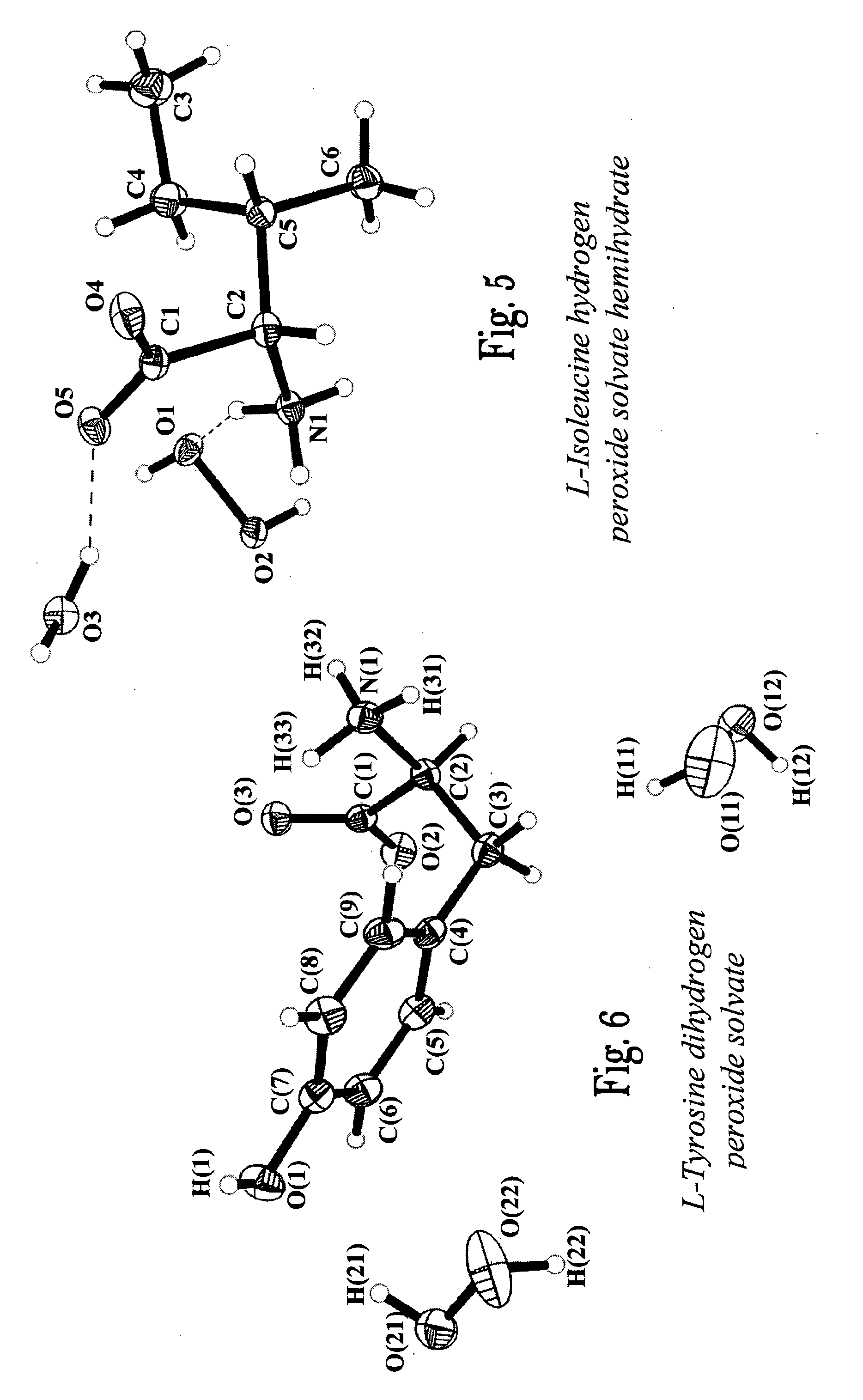Amino Acid Perhydrates, Process for Their Preparation and Uses thereof
a technology peroxide, which is applied in the field of amino acid perhydrates, process for their preparation, and can solve the problems of interfering with the contemplated catalytic and synthetic utility of anhydrous hydrogen peroxide solution
- Summary
- Abstract
- Description
- Claims
- Application Information
AI Technical Summary
Benefits of technology
Problems solved by technology
Method used
Image
Examples
example 1
L-Serine Mono Hydrogen Peroxide Solvate C3H7NO3.H2O2
[0076]L-serine (20 g) was dissolved in 20 mL of 70% aqueous hydrogen peroxide solution in a round-bottomed flask. The solution was allowed to stand at a temperature of 0° C. for one week, following which crystals were formed. The crystals were separated from the mother liquor by decantation, washed twice with dry ethyl acetate, and dried in a vacuum desiccator for two hours. The crystals were stored in a desiccator under refrigeration. The product obtained was identified as serine mono perhydrate. The yield was 85%. The product has been examined by several techniques as described below.
[0077]Crystal data: C3H9N1O5, M=139.11, orthorhombic, a=4.8616(6), b=9.1187(11), c=13.2712(16) Å, space group P212121, Z=4, μ(Mo—Kα)=0.151 mm−1, 6747 reflections measured, 860 unique (Rint=0.0184) which were used in further calculations. The final residuals were: R1=0.0294, wR2=0.0777 for 852 reflections with I>2σ(I) and 0.0297, 0.0782 for all data ...
example 2
L-Serine Perhydrate / Hydrate C3H7NO3.0.91(H2O2).0.09(H2O)
[0082]L-serine (1 g) was dissolved in 1 mL of 50% aqueous hydrogen peroxide solution in a round-bottomed flask. The solution was allowed to stand at a temperature of −20° C. for 5 hours, following which crystals were formed. The crystals were separated from the solution according to the procedure of Example 1.
[0083]The crystals were analyzed by single crystal x-ray, elemental analysis, hydrogen peroxide content, (by permanganatometry) and x-ray powder diffraction to assess the hydrogen peroxide content. The product was identified as L-Serine perhydrate (L-serine 0.91 hydrogen peroxide solvate 0.09 hydrate C3H7NO3 0.91 (H2O2) 0.09 (H2O)).
example 3
Glycine Hydrogen Peroxide Sesquisolvate C2H5NO2.1.5(H2O2)
[0084]Glycine (0.8 g) was dissolved in 1 mL of 98% aqueous hydrogen peroxide solution in a round-bottomed flask. The solution was allowed to stand at a temperature of −20° C. for a week, following which crystals were formed. The crystals were separated from the solution according to the procedure of Example 1. The product obtained was identified as glycine hydrogen peroxide sesquisolvate, with hydrogen peroxide content of about 40.47%. The yield was 85%. The compound has been examined by the methods described below.
[0085]Crystal data: C4H16N2O10, M=252.19, triclinic, a=7.2854(4), b=8.0045(5), c=9.6698(6) Å, α=79.485(1), β=72.238(1), γ=87.275(1)°, V=527.99(5) Å3, space group P-1, Z=2, μ(Mo—Kα)=0.159 mm−1, 5439 reflections measured, 2543 unique (Rint=0.0126) which were used in further calculations. The final residuals were: R1=0.0291, wR2=0.0812 for 2334 reflections with I>2σ(I) and 0.0315, 0.0828 for all data and 209 parameters...
PUM
| Property | Measurement | Unit |
|---|---|---|
| polar | aaaaa | aaaaa |
| DSC | aaaaa | aaaaa |
| melting | aaaaa | aaaaa |
Abstract
Description
Claims
Application Information
 Login to View More
Login to View More - R&D
- Intellectual Property
- Life Sciences
- Materials
- Tech Scout
- Unparalleled Data Quality
- Higher Quality Content
- 60% Fewer Hallucinations
Browse by: Latest US Patents, China's latest patents, Technical Efficacy Thesaurus, Application Domain, Technology Topic, Popular Technical Reports.
© 2025 PatSnap. All rights reserved.Legal|Privacy policy|Modern Slavery Act Transparency Statement|Sitemap|About US| Contact US: help@patsnap.com



